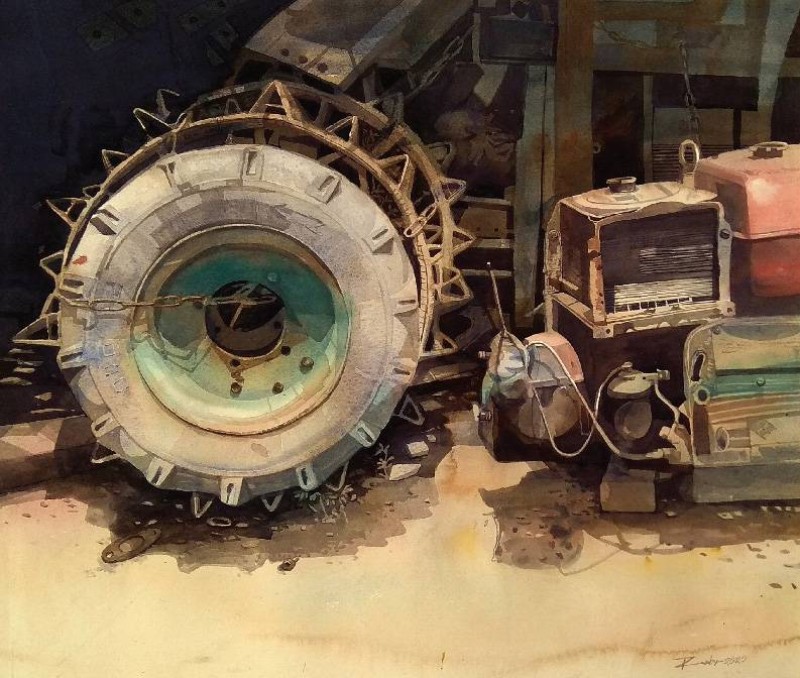
Raby’s Diligent Journey
Name Md. Rafiqul Islam; But Raby is better known by his nickname. After obtaining a master’s degree in printmaking from the Fine Arts Faculty of Dhaka University, he returned to the country with another degree in the same subject at the end of two years of study at Kalabhavan, Santiniketan. Both institutions recognized his skill and creativity in printmaking. Raby is incredibly hardworking and dedicated. He has a deep love for art and a great passion and addiction, which is called passion in English. Creation gives him joy; And it is in that inner sense of joy that he becomes a zealous aspirant in the medium experiments; Which makes him dedicated even in unrelenting labor. Added to this is Santiniketani Prabhishat, an idealistic vision of his life-loving compassion.
Even so, the print medium is labor intensive. Then the mediums of printmaking that he chose for his work - such as: etching, aquatint, mezzotint, sugarlift, sanotype, lithography, plateography, in most cases such chemicals are used that are very dangerous to health; As a result hyper-vigilance is inevitable in the studio. Even on such a risky journey, Raby with his innovative mind happily engages in various experiments. By etching on aluminum plates instead of zinc plates, with copper sulphate instead of nitric acid, he left his signature skills. The real joy of art lies in the passion to create new effects by going beyond the established rules. The emotion of this joy is his essence; Which constantly calls him out of bounds and makes him thirsty for far away. By mastering new mediums, one becomes interested in new creations. His skill in drawing as well as realistic practice make the toil of intermediate audits worthwhile.
There is a close association of the medium with his subjectivity, a reciprocity, that is, a definite tendency to achieve pictorial richness through the closeness of mutual relations. This characteristic of the allyship of the subject-medium becomes apparent when he engages in practice with abandoned vehicle cover-machines and films in the same etching-aquatint medium. Notably, the image quality of the Dhaka-Yantra was fundamentally important at this stage of practice. But when he came up with the question of finding a philosophy of art creation during the initial stages of his studies at Santiniketan, an extraordinary concept was discovered in him. As a result, the perspective changed; A new vision was created in the texture of the image.
The invention of the wheel greatly accelerated the progress of human civilization. And its inevitable path has been followed by the machine, whose inevitable contribution to civilization is undeniable. But over time this progress has created some negative elements. Machines have become tools of exploitation for some; In the inevitable process of which, modern weapons and various techniques of warfare have been created, which have become a serious threat to human existence today. The physical development of the child is taking place in the maternal cavity with the smell of weapons and gunpowder. In the whole process of the child’s coming into existence, there is always the fear of non-existence. All these are the subjects of Raby’s art. And at the same time, peace has become the absolute desire, the absolute urgency to protect human existence. All human-friendly environments are adorable as subjects of his art. Shantiniketan’s Hanuman and Santal lifestyle. Such a pacifist plays a leading role in creating a human-friendly environment and occupies an important place in the fabric of his image.
All the works in Raby’s exhibition titled ’Transformation’ are prints. But the spirit embodied in this title is associated with his whole philosophy of life. Through this series of paintings, he is interested in presenting the essence of the transformational dynamics of life with which he has come to know. I hope and trust that Raby’s pursuit of peace, philanthropy and industrious interest in medium experimentation will make his sincerely joyous and passionate artistic journey worthwhile.
© Written by Syed Azizul Haque, Professor, University of Dhaka